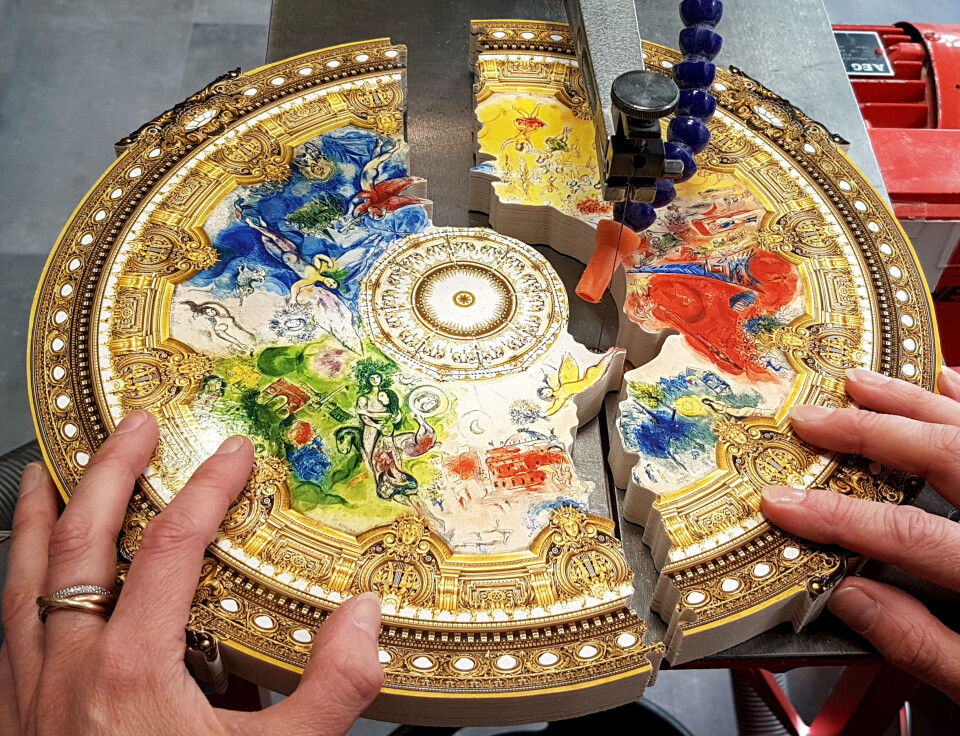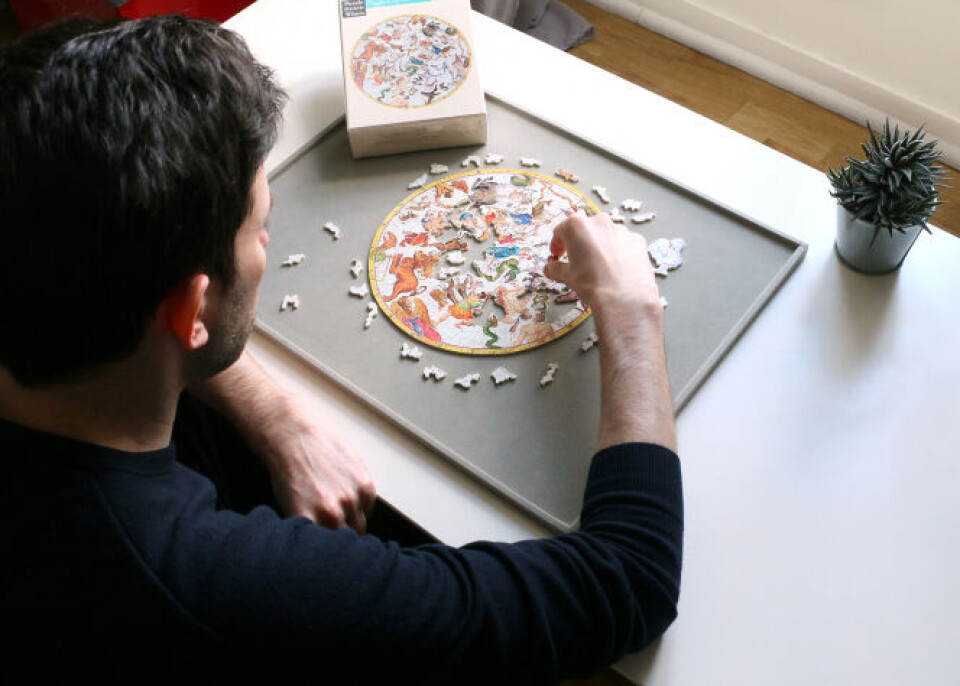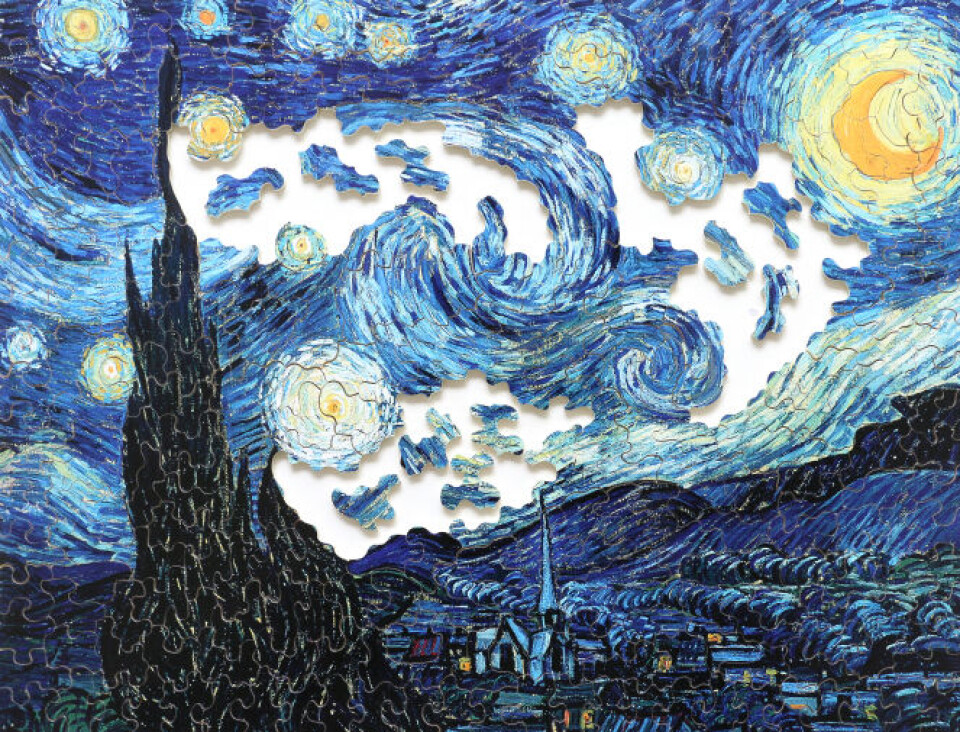-
Duck Cold! Four French phrases to use when it is freezing outside
We remind you of French expressions to use to describe the drop in temperature
-
When and why do we say le moral dans les chaussettes?
We explore this useful expression that describes low spirits
-
David Hockney among France’s New Year honours list
Former Normandy resident awarded second grade of honour
The only company making wooden jigsaws by hand in Europe is French
‘It is meticulous work but at the same time it is very creative’, says artisan

The only company to make wooden jigsaws by hand in Europe – Puzzle Michèle Wilson – is French.
Instead of being uniformly stamped out by machines, each puzzle is cut using a scroll saw by an artisan who does not work to a plan.
Every piece is created in sympathy with the image, which is always taken from a painting by a well-known artist.
The firm has workshops in Chalon-sur-Saône and Paris.
Sophie Ludot, a jigsaw cutter at the workshop in the 15th arrondissement of the capital since 2003, said: “If we are working on a Van Gogh, we follow the undulations in the painting. If it is a Brueghel, we cut round the tiny people.
“For the sky, we usually use soft round cloud-like shapes, pieces will be long and wavy for the sea or rivers, and pieces for a wall will be cut with straighter lines. We study the painting before we begin, but then decide exactly how we will cut as we work through the image.
“Our pieces have to be a similar size, but varied in shape, and we have to count as we go to make sure we have the right number of pieces at the end – and though it will be near to the number printed on the box, it is rarely exactly the same.”
It takes two years to learn all the skills and to work up from making the smallest 80-piece puzzles, sold at €31, to the biggest, most challenging and most expensive size with 5,000 pieces, costing €830.
These traditional puzzles are reputed to be three times as difficult as classic ones.
An 80-piece jigsaw takes one hour to make, and a day is needed for 1,000 pieces.

The cutters work fast and have to turn the wood swiftly to make the blade follow curves and angles: “You have to concentrate hard and anticipate your next moves. It is meticulous work but at the same time it is very creative, because you decide how to cut the puzzle and how to work with the artist who has made the image.
“We cut seven together, and though they will be identical, the next time you work on the same painting, the outcome will be different, as we are bound to cut it in another way.Each set of seven is unique.”
Before the puzzle is cut, other craftspeople have to take the image and stick it on to a wooden support made from poplar, which is then sanded to make it completely smooth.
Each of the seven puzzles has a different-colour back so the cut pieces which end up mixed together can be easily sorted.
Ms Ludot became a puzzle maker by chance. “I didn’t know there was a company like this one until I passed in front of the shop on an errand for my old boss one day and discovered it,” she said. “I was like a child gazing into the window of a sweet shop and found it really incredible.
“After a few months, somebody left the company and I applied and was taken on.
“There is no school where you can learn this craft, and so I was taught on the job.
“Using the scroll saw is not difficult, but deciding where to cut takes time to learn.
“I love it because you never do the same thing twice and I love to learn about the paintings as I cut the image. I always find a new detail, or a new colour and try to work out why the artist made those choices.”
The company was started by the late Michèle Wilson (puzzlemichelewilson.com) in 1975. She was a French woman married to an Englishman, hence the surname.

She had worked for Vèra, a company which used to make wooden puzzles and then set up by herself.
The company is going from strength to strength. During confinement, the puzzles became extremely popular as an activity families could enjoy together and sales doubled.
The company hired 10 extra employees, taking the total to 30. There are two boutiques in the capital where you can see the jigsaw makers at work, and they sell online.
The invention of jigsaw puzzles is credited to English engraver and mapmaker John Spilsbury in the 1760s.
He is said to have mounted one of his maps on wood and then cut around the countries as an educational tool for schoolchildren. At that time, hand saws were used and they were called dissected puzzles.
The term jigsaw was not used until later, after the jigsaw used to cut the puzzles was invented in the 1880s.
Related stories:
‘I am still captivated by the magic of my stained glass windows work’
Artisan soap maker: 'After six years, it still gives me a thrill’
























